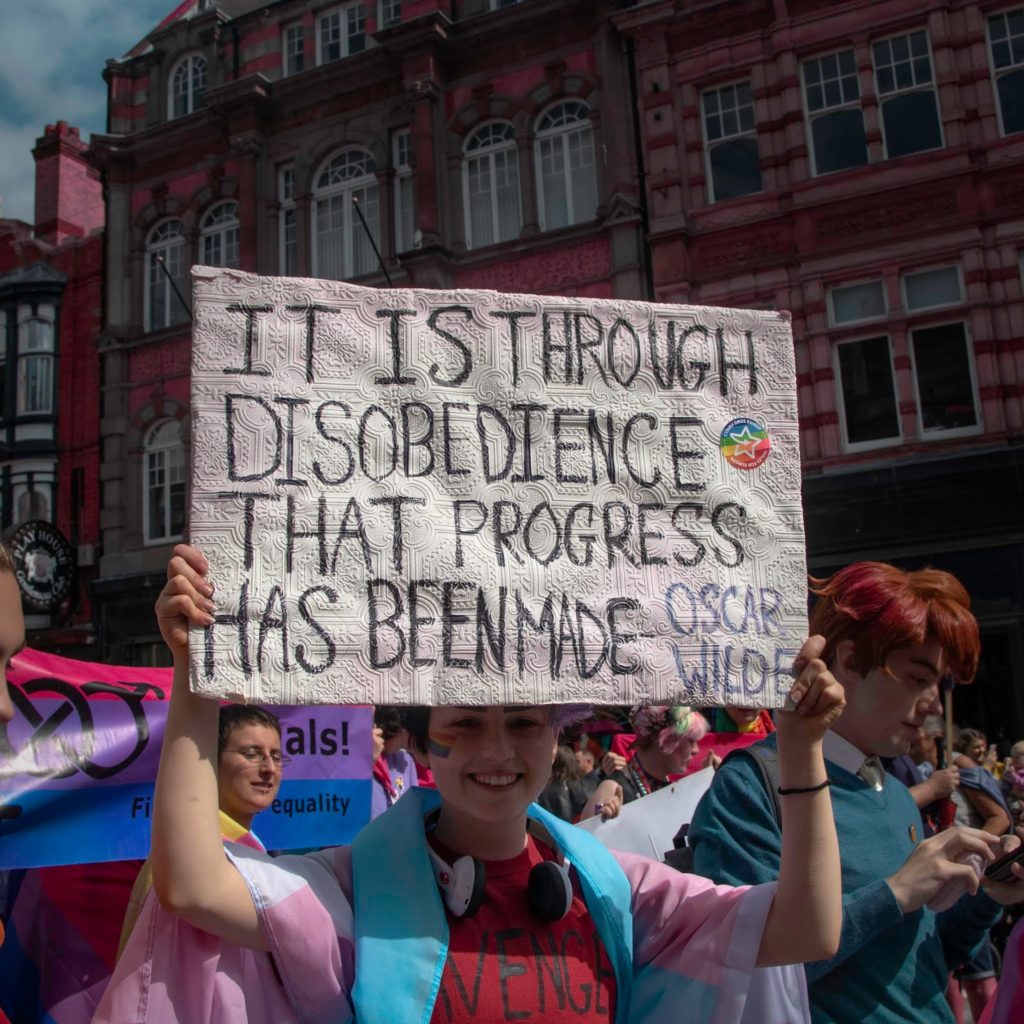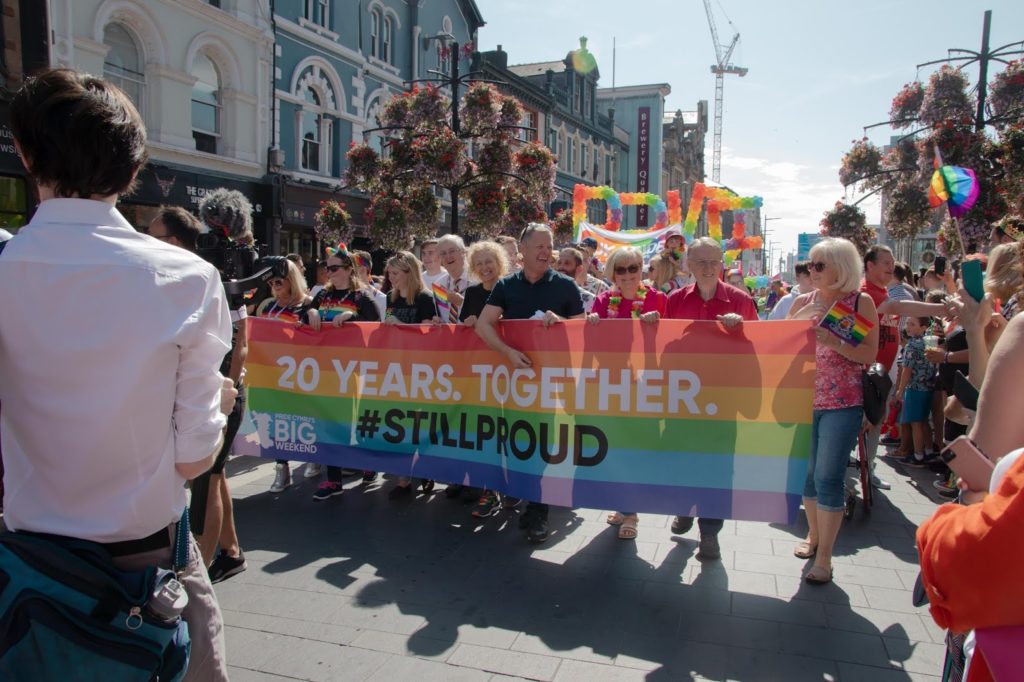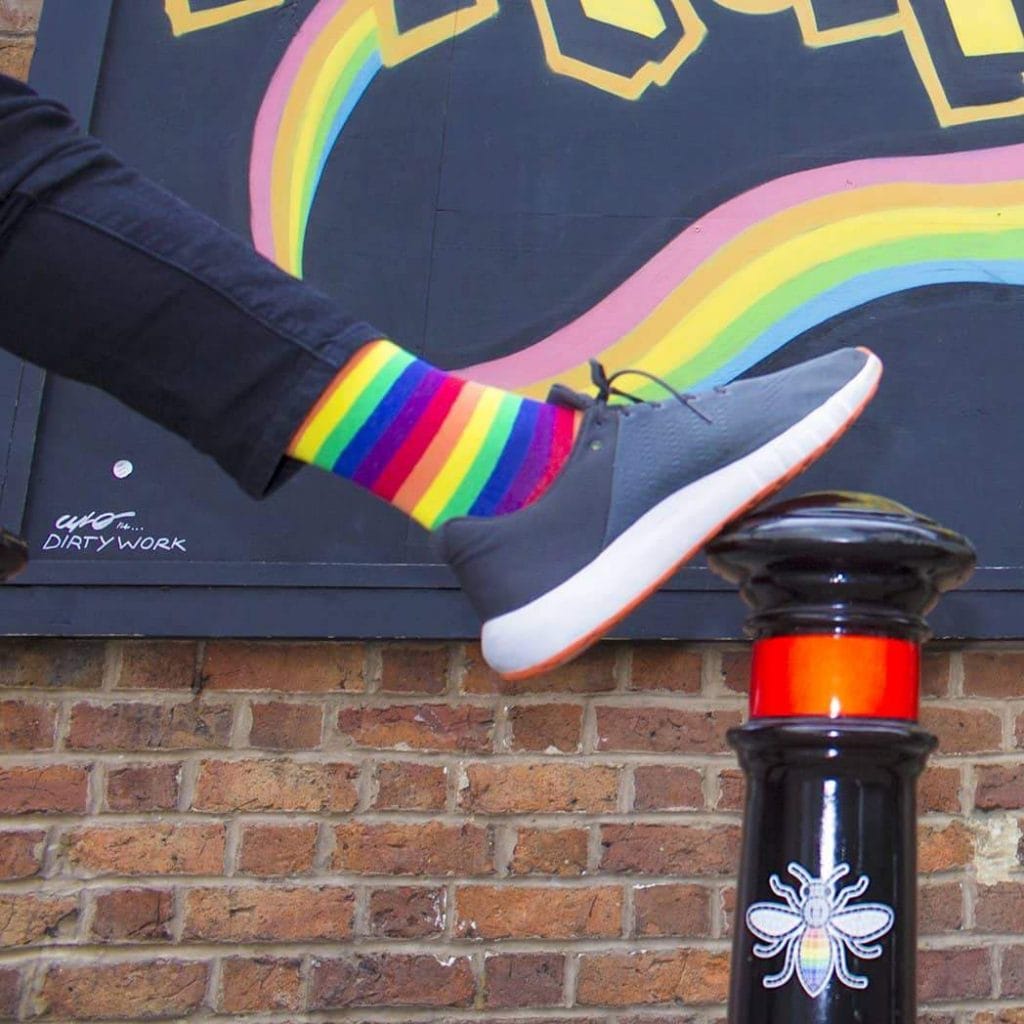A history of Pride month
10/6/2021
In honour of Pride month we invited Izzy McLeod to take over our blog. Izzy (they/them) is a renewables student, sustainable living blogger and environmentalist freelancer living in Cardiff. They are currently running the Who Made My Pride Merch Campaign, which looks at ethical fashion and Pride collections, as well as supporting LGBTQ+ garment workers. With passions for the environment, climate justice and Queer liberation, who better to give our blog over to this Pride month? Read on…
It’s June, which means the rainbows are out and many of the LGBTQ+ community are celebrating and protesting. Pride events start now and continue into the summer here in the UK, ranging from small grassroots picnics, parties and memorials to full-scale corporate-sponsored events. What started as a rebellion is now a worldwide celebration, with more countries hosting their first pride events every year. Pride has come a long way from its beginning in the 1960s. But how did it actually start? And what does it really mean to LGBTQ+ people today?
It began long before Stonewell
Many cite The Stonewall uprising as the very beginnings of Pride and while it is an important part of LGBTQ+ history – and sparked pride as we know it today – this definitely wasn’t the first time that LGBTQ+ people had come together and protested for their rights. Not to mention, it wasn’t only happening in the USA.
Some would take it back to 1897 in Berlin and cite Magnus Hirschfeld’s organisation as the first advocacy group for gay and trans rights.Meanwhile, in the USA The Society for Human Rights was founded in 1924. But queer people have existed since humans have, with evidence of same-sex relationships found in ancient civilisations.
Persecution of LGBTQ+ people has been happening since at least 1000BCE, put into force in parts of Europe since the 4th century, and across much of the rest of world following colonialism, and there’s a long history of LGBTQ+ people resisting this persecution. There is evidence of secret gay weddings in Rome in the 16th century, clubs and cafes for LGBTQ+ people in 18th century Britain, and mutual aid organising crops up across the LGBTQ+ community in the 20th century.
Then comes the Stonewall rebellion – June 28th 1969. The usual crowd were enjoying a drink at The Stonewall Inn in New York City’s Greenwich Village before a police raid took hold (something that was very common at the time with anti-cross dressing laws, along with other anti-LGBTQ+ laws). The police were arresting patrons, but the community fought back. It became the now famous Stonewall riots, uprising, rebellion, and marked a pivotal point in LGBTQ+ history.

A springboard for Pride
Just after the Stonewall riots, the Gay Liberation Front started organising. One year later, on June 28th 1970, the Liberation Day March was held, and in New York, San Fransisco and Los Angeles people marched for gay rights.
In the UK in 1972, the London Gay Liberation Front hosted the first London Pride event consisting of around 2,000 people. In 1978 the first pride flag was designed by American artist Gilbert Baker. It is worth noting that at the time many of these initial protests and organisations fought only for the rights of, primarily, white, gay men and lesbians, so countless other organisations and community groups have since sprung up for the rights of the rest of the community, including transgender and bisexual people.
The first Pride march wasn’t the first time members of the LGBTQ+ community had come together, but this was one of the first times they had done so on this scale, and so visibly too. It marked the start of the gay rights movement as we know it today.
From the first Gay Liberation March in London in 1972, LGBTQ+ activists in the UK and beyond have fought through the AIDS Crisis, for the decriminalisation of homosexuality, the declassification of homosexuality and transgender health issues as mental health issues. They have fought against Section 28, for the legalisation of same-sex marriage, for transgender health care and the formation and reform of the Gender Recognition Act – and many more. And they’re still going.
Pride each year is usually a celebration, often a protest, but for the other 11 months of the year LGBTQ+ organisations, activists and allies continue to push for change.

Pride today
In the 50 years since the Stonewall riots, a significant amount has changed for the LGBTQ+ community in many parts of the world, which allows us to have the kind of Pride celebrations we do have in many places. Though there is still a lot to do, with at least 69 countries with laws that criminalise same-sex relationships and nine countries with laws targeting transgender and gender non-conforming individuals.
Even in the UK 35% of LGBTQ+ people have hidden that they’re LGBTQ+ for fear of discrimination
The origins of pride were messy, and I’d argue that Pride today is still pretty messy. Corporate Pride events often put profits first and pul us away from the roots and true meaning of Pride. Often, large Pride events aren’t held in places where the more marginalised within the community can congregate safely. The LGBTQ+ community is not one big harmonious community, but one that contains many different communities. There are issues around the safety of much of the community with police at Pride, as well as accessibility issues for many people attending. There are issues that need to be addressed. Year on year we see arguments about the place of kink at Pride and even the presence of drag and trans people at Pride.
But there are still plenty of grassroots and larger organisations continuing to use collective action as a way to advocate for LGBTQ+ rights worldwide, as well as celebrating.
There are youth Pride events, trans Pride events, Black Pride, and many more Pride events that serve specific parts of the community and offer a space for many LGBTQ+ people to be themselves in a way where they otherwise might not be able to be.
Pride offers a space, and a platform, for many individuals, communities, and LGBTQ+ organisations to reach people, to fundraise, and grow. It can be a place where queer people can just let go and have fun, to forget the harshness of the outside world. Pride means so many different things to so many different people and though this can be messy, that’s also pretty great.
The work and advocacy of so many people before today has led us to a place where we can create Pride events and parties where so many queer people can just experience the joy of being themselves. So yes, there’s still a lot of work to do, but it’s also nice to be able to just stop and appreciate all that has come before and celebrate LGBTQ+ existence. The fact that we have Pride celebrations running throughout the summer each year shows the power of collective action. From a riot against the police in 1969 to a worldwide celebration of the LGBTQ+ community. Something that is worth appreciating, and celebrating, while continuing the work of resistance and change.
Explore some of the best UK Pride Events
- LGBT Youth Scotland Pride Picnics – June 2021
- London Trans Pride – 26th June 2021
- UK Black Pride – 2nd – 4th July 2021
- Youth Pride Manchester – 29th August 2021
- Pride in London – 11th September 2021
Want to shop brands that give back to give back to LGBT causes?


